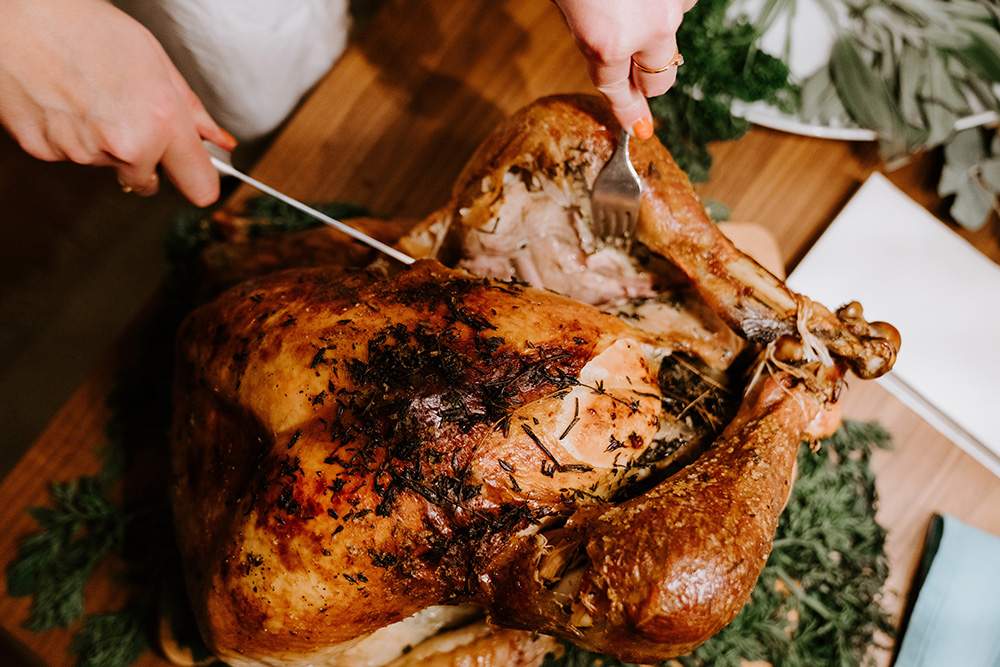
Dépeçage and Carving a Turkey
by Jeffrey J. Kroll
With the leaves and temperatures both dropping, it can only mean one thing: Thanksgiving and Christmas are rapidly approaching. In a perfect world, Thanksgiving, and even Christmas, is a cool autumn day, time with family, a delicious spread of stuffing and apple pie, and indulging in just one more bite, until you simply cannot eat any more. There will be an NFL game on in the background, or a pickup game with the neighbors going on outside. While there are many traditions, icons, and histories behind the holiday, one of the most classic moments is the carving of the Thanksgiving, or Christmas, turkey. Some give the honor to the host, others to a special guest, others may not even think about who cuts it at all.
Regardless of who holds the knife, how it is cut matters. The turkey itself is made up of several different parts: dark meat, light meat, wings, thighs. The flavor and texture of the turkey change with each part, and, consequently, preferences develop for certain parts over others. Thus, cutting the turkey inevitably requires the cutter to separate the meat and parts so that the takers can take accordingly. Such culinary intricacies require a master to wield the knife to ensure the turkey is properly carved, and the rumbling bellies are satisfied.
While the specifics of turkey cutting may appear at first to have no semblance to personal injury, let alone the legal world, turkey cutting here serves as an analogy for a ubiquitous, yet uncommonly mentioned, legal theory: dépeçage.
With a French etymology, dépeçage simply means to carve up, or to analyze minutely. In the law, dépeçage is a conflict of laws term, whereby different issues within a case are governed by laws of different states. In short, just because a case is filed in one state does not necessarily mean that only the law of the state in which the court sits will be applied.
By way of example, imagine a case where a product is manufactured in State A, by a corporation that is incorporated in State B, but which causes injury to the Plaintiff in State C. Such a set of facts complicates the question of which state’s choice of law applies, especially where there are multiple issues, and potentially a contract, involved. Accordingly, just as a master carves a turkey, an effective trial attorney must apply dépeçage to carve the case into its individual questions. Each question may require its own conflict of laws analysis, and, consequently, be governed by a different state’s law than other issues.
In the legal world, dépeçage is just like the Holiday turkey. A client’s case, as a whole, is the turkey. But within each case, there are a potential myriad of questions and issues – jurisdiction, choice of law, choice of forum – just like in the turkey there are different meats, parts, and flavors. Each state’s laws vary, with other elements, remedies, and recourse. So, the applicable state law matters for the outcome of your case.
So, just as one cuts and divides a turkey, so too must a case be divided into its own discrete issues and analyzed under the applicable choice of law analysis. The attorneys at Kaveny + Kroll are committed to analyzing your case, no matter how complex, to get it resolved under the correct legal framework. You should not trust your personal injury case to a novice; you should trust Kaveny + Kroll to successfully analyze your case to carve up any potential choice of law issues.

